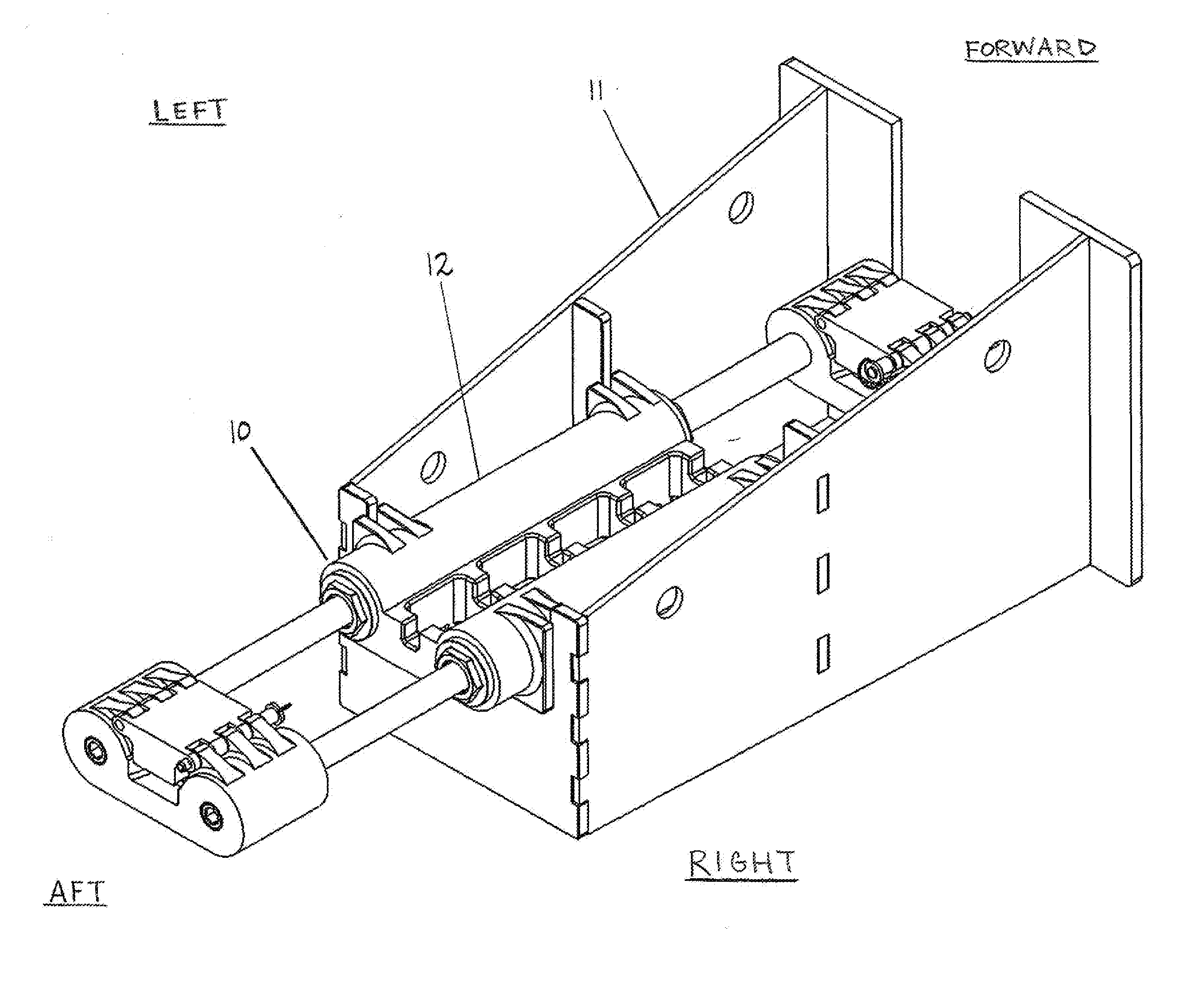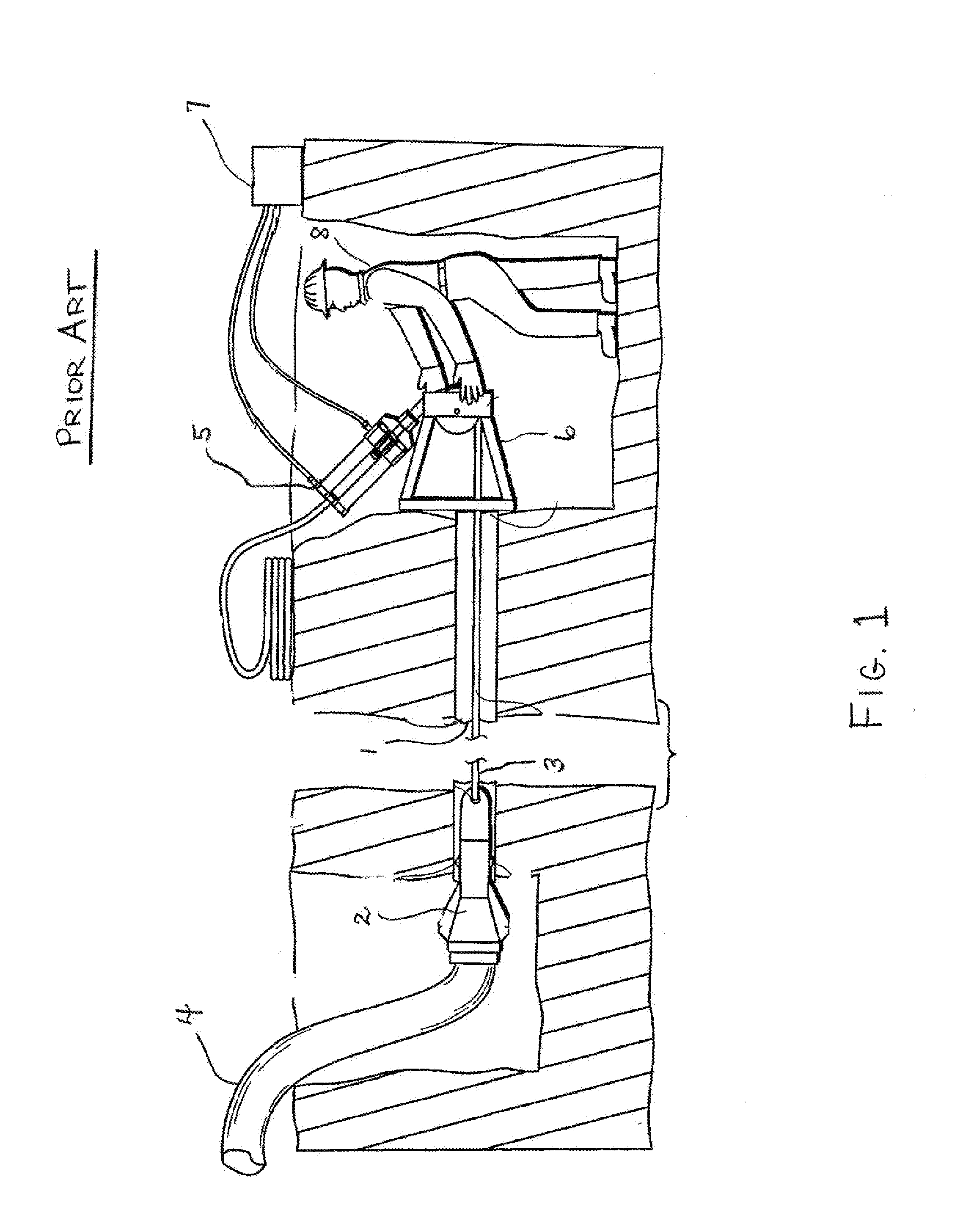Trenchless Pipe Replacement of Underground Pipe
a technology for underground pipes and trenchless removal, which is applied in the direction of electrical equipment, cables, electrical cable installations, etc., can solve the problems of inability to easily re-excavate, unacceptably costly re-excavation, and difficult replacement of underground pipes, and achieve the effect of double speed
- Summary
- Abstract
- Description
- Claims
- Application Information
AI Technical Summary
Benefits of technology
Problems solved by technology
Method used
Image
Examples
Embodiment Construction
[0022]With reference to FIG. 1, it has long been known in the art that an old pipe 1, i.e. water, sewer, or electrical conduit, can be replaced by pulling a mole 2 via a cable 3 through the pipe to be burst 1, and thereby bursting the pipe in a radially outward direction. Typically, a length of flexible plastic pipe 4 is drawn through the burst pipe 1 and thereby takes the place of the burst pipe 1. Prior art systems require a means for generating the pulling force on the cable 1 and this means has typically been supplied by winches (not shown) or by a hydraulic cylinder-based cable puller 5. Hydraulic cylinder-based cable pulling systems further require a pulling frame 6 that faces an opening in the pipe to be burst 1 through which the cable 3 may be drawn. Such systems further require a source of pressurized hydraulic fluid 7 and at least one operator 8. As noted in the background section, prior art systems pull the cable only on their outward stroke.
[0023]Referring to FIG. 2, the...
PUM
 Login to View More
Login to View More Abstract
Description
Claims
Application Information
 Login to View More
Login to View More - R&D
- Intellectual Property
- Life Sciences
- Materials
- Tech Scout
- Unparalleled Data Quality
- Higher Quality Content
- 60% Fewer Hallucinations
Browse by: Latest US Patents, China's latest patents, Technical Efficacy Thesaurus, Application Domain, Technology Topic, Popular Technical Reports.
© 2025 PatSnap. All rights reserved.Legal|Privacy policy|Modern Slavery Act Transparency Statement|Sitemap|About US| Contact US: help@patsnap.com



